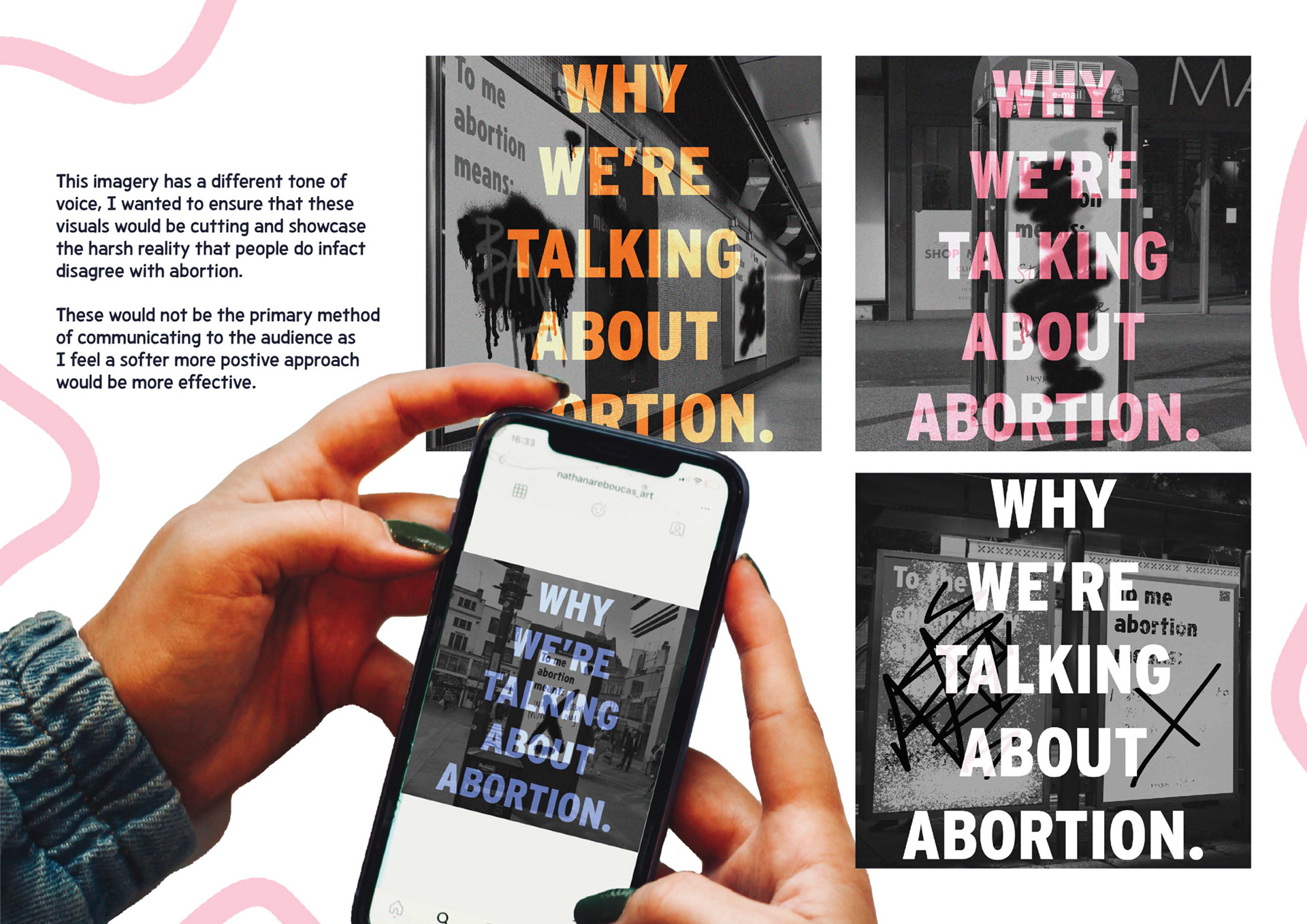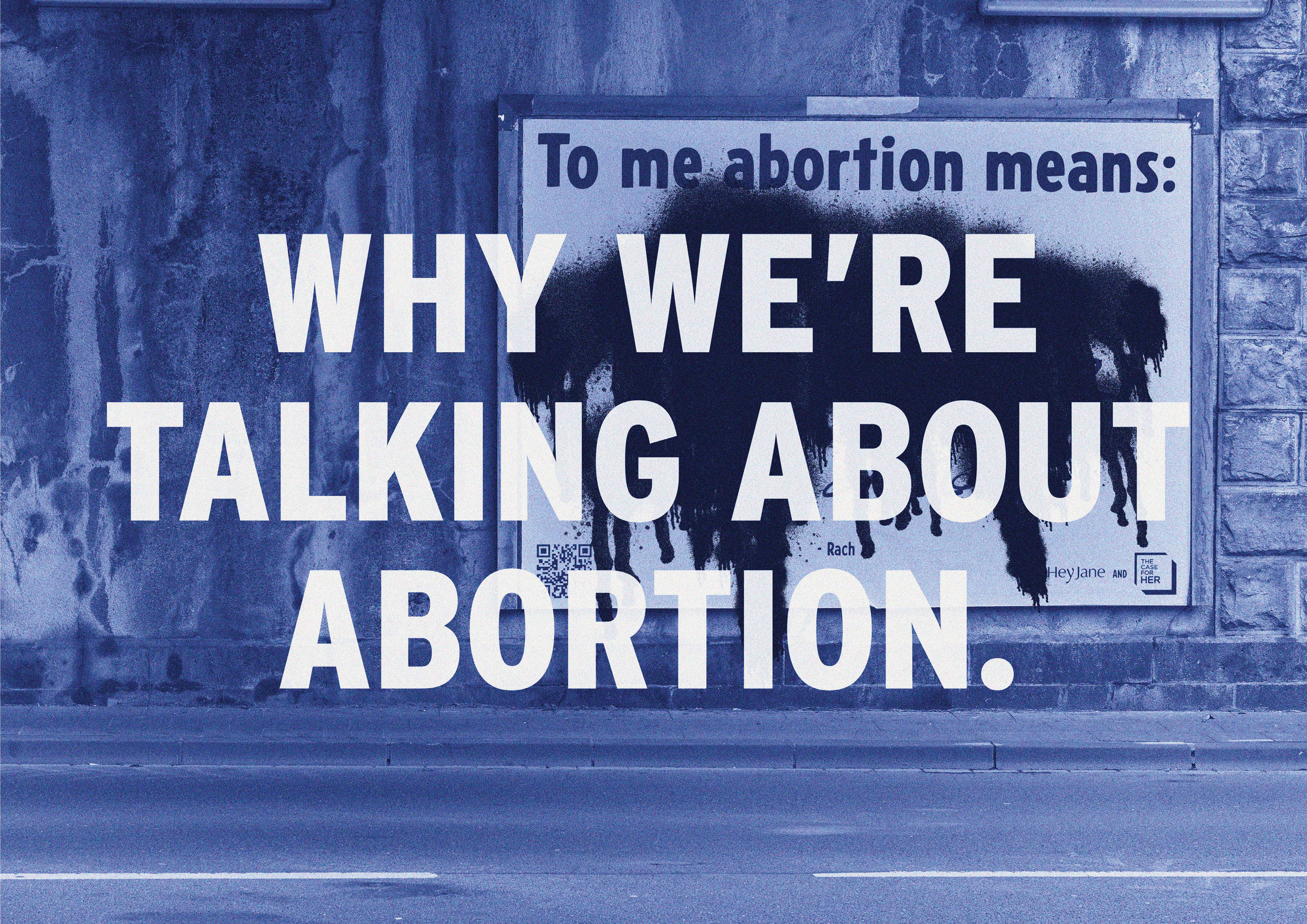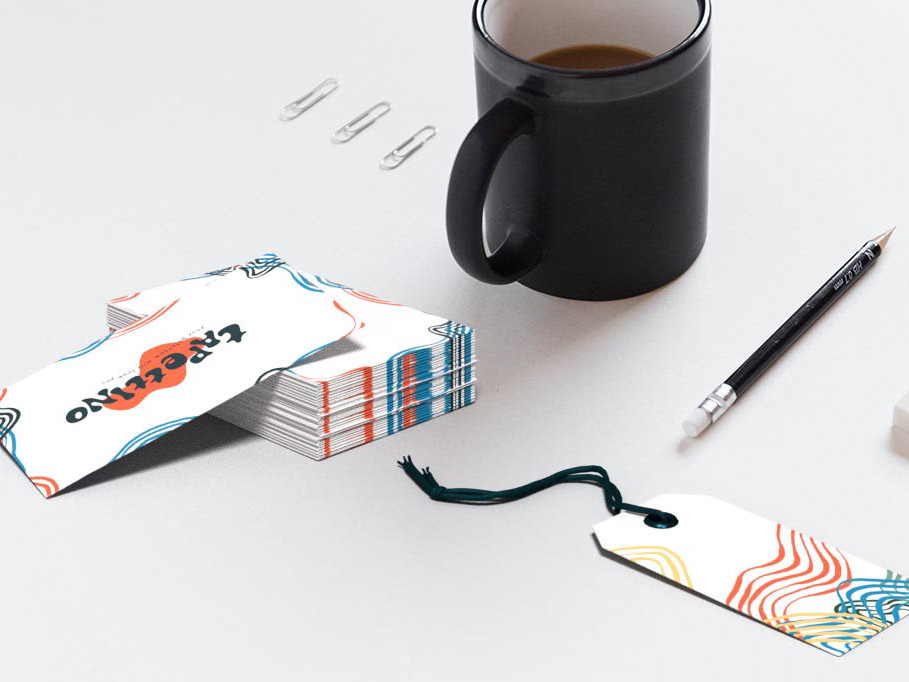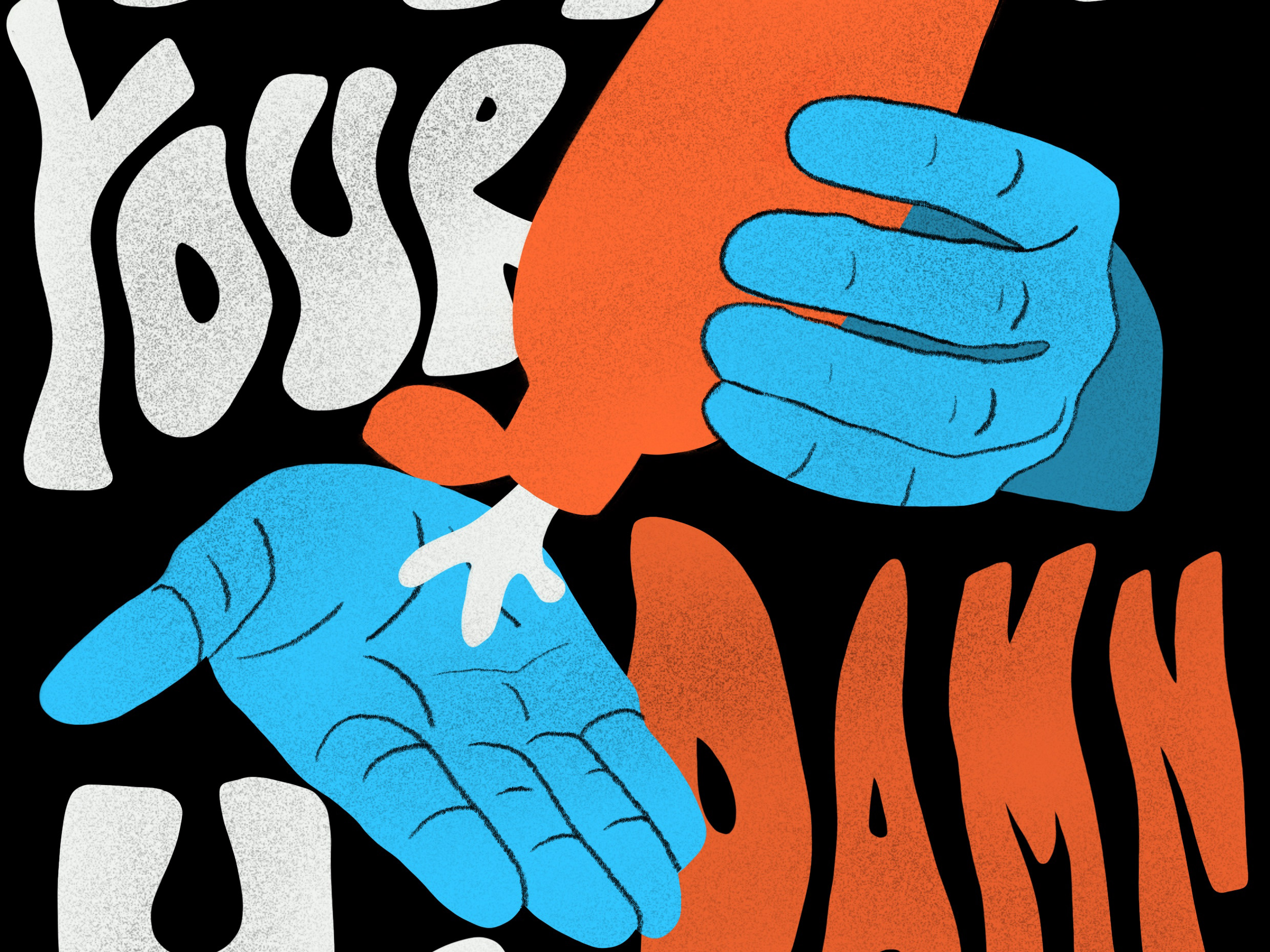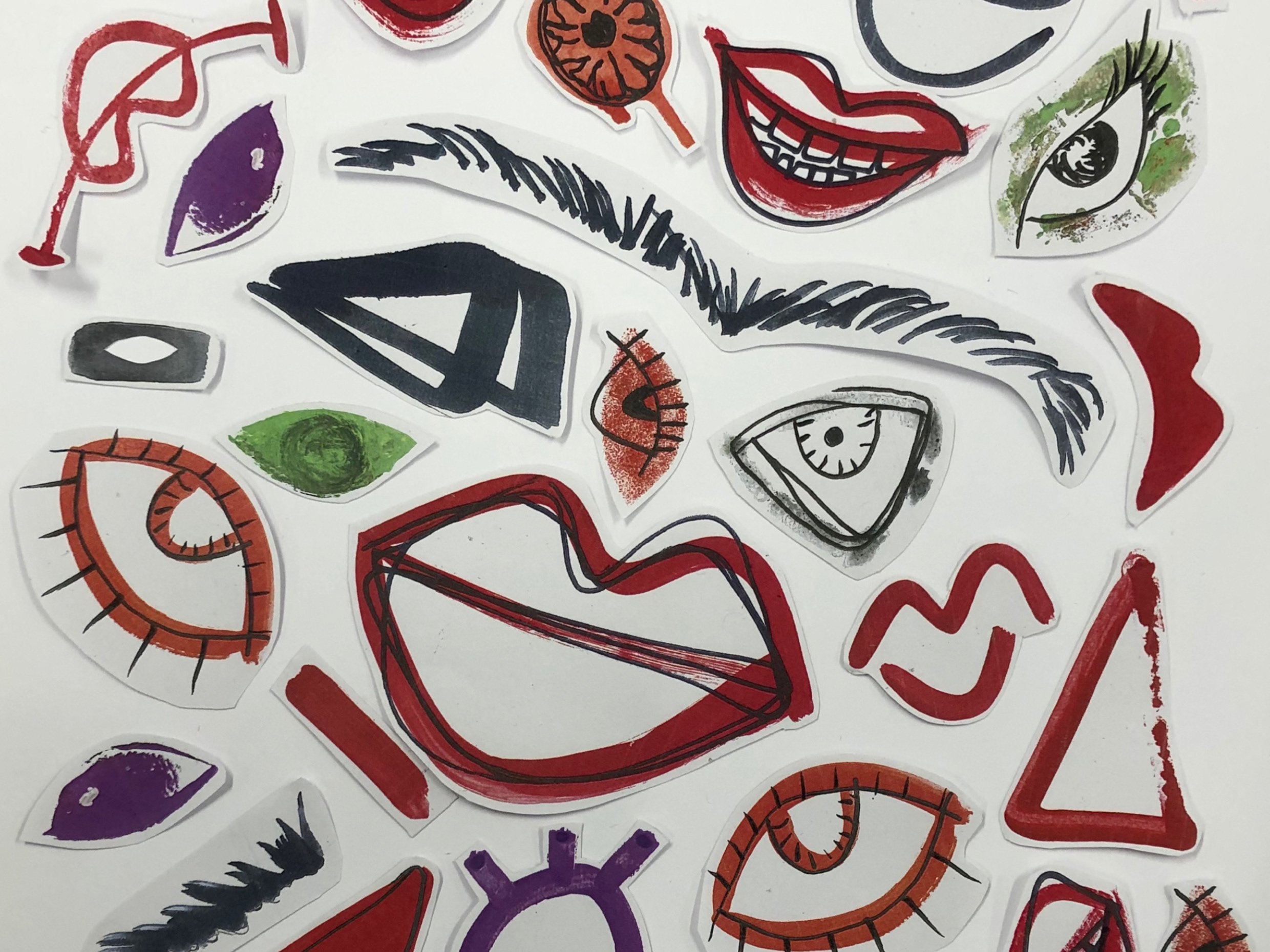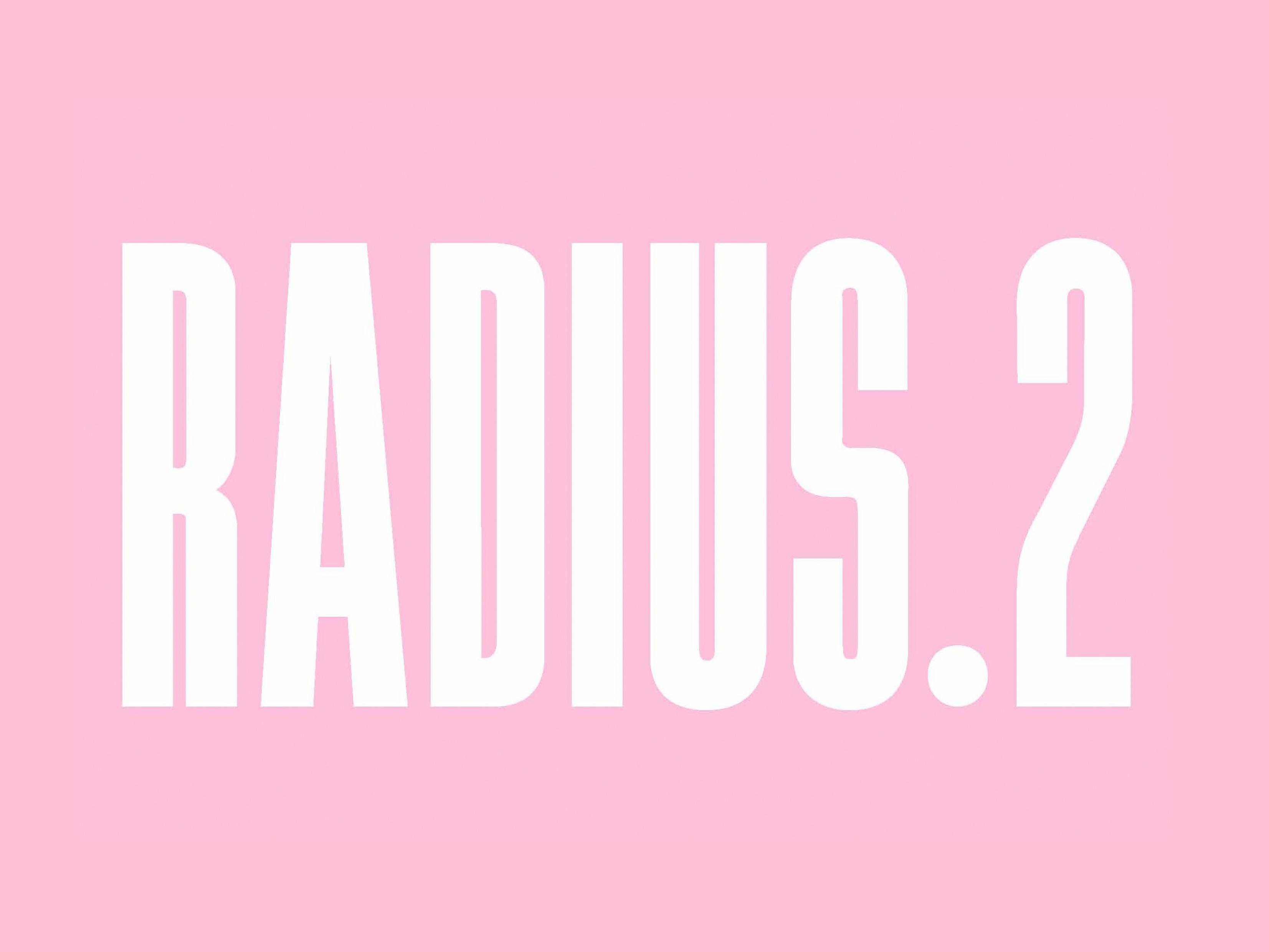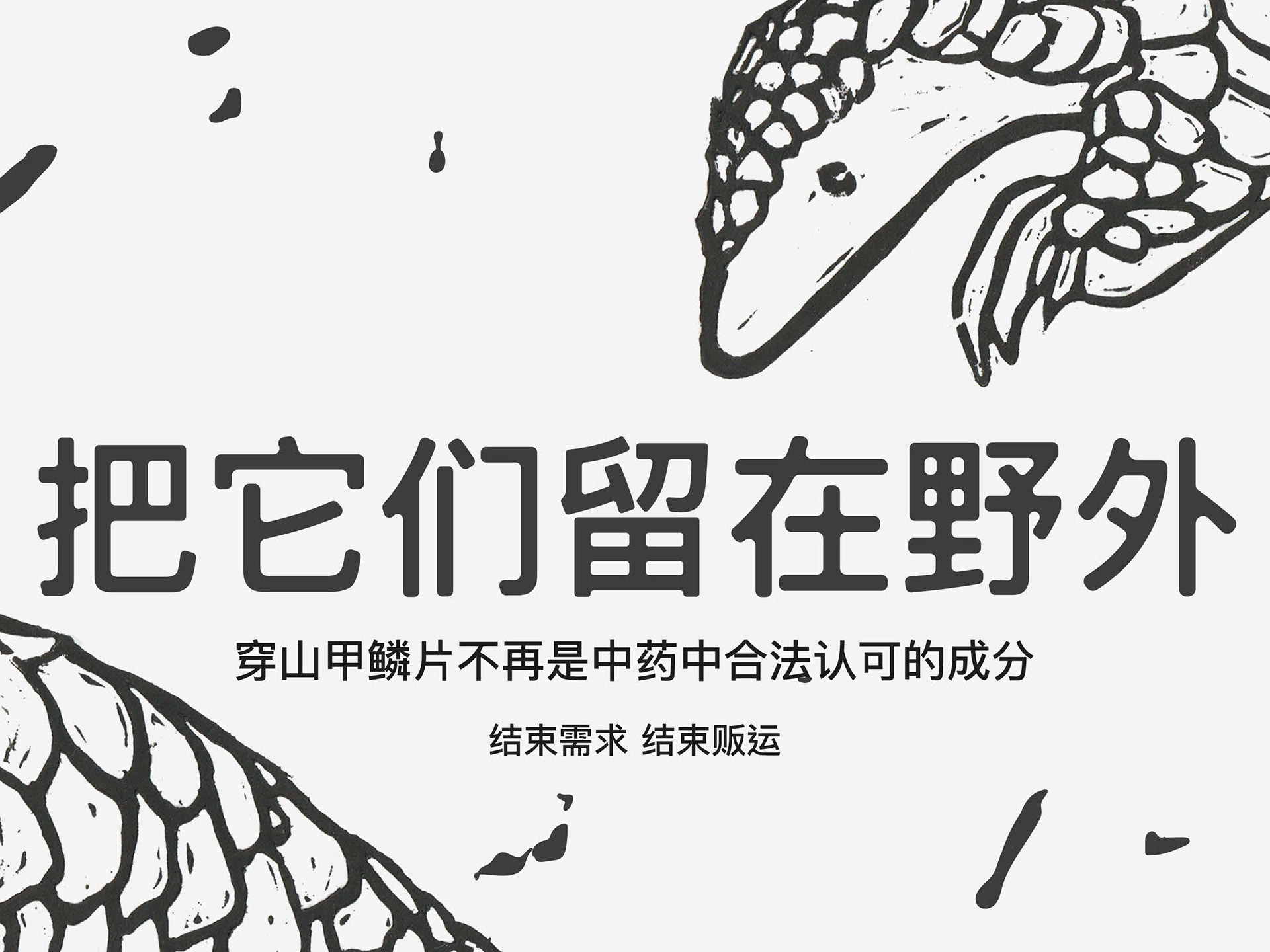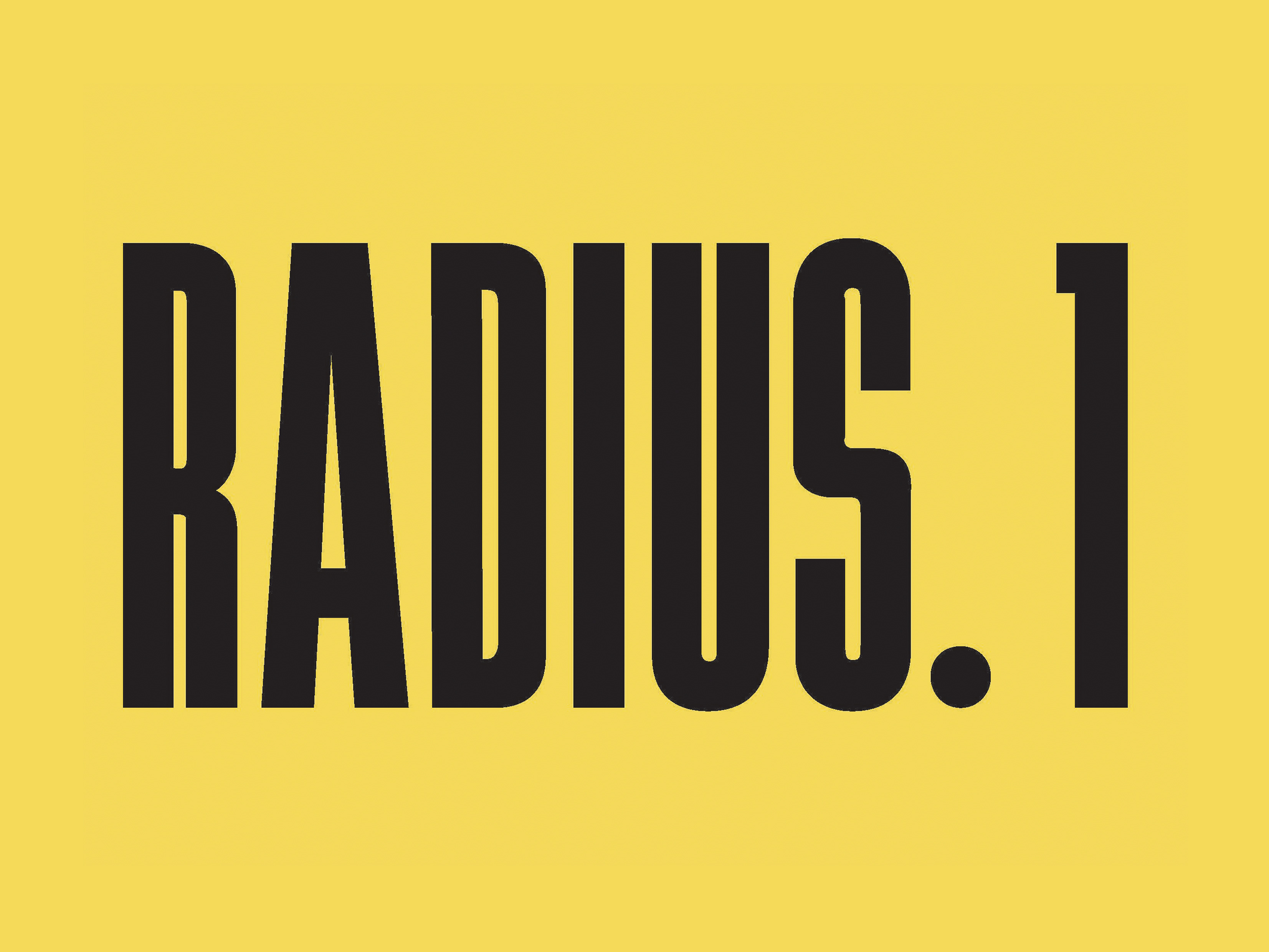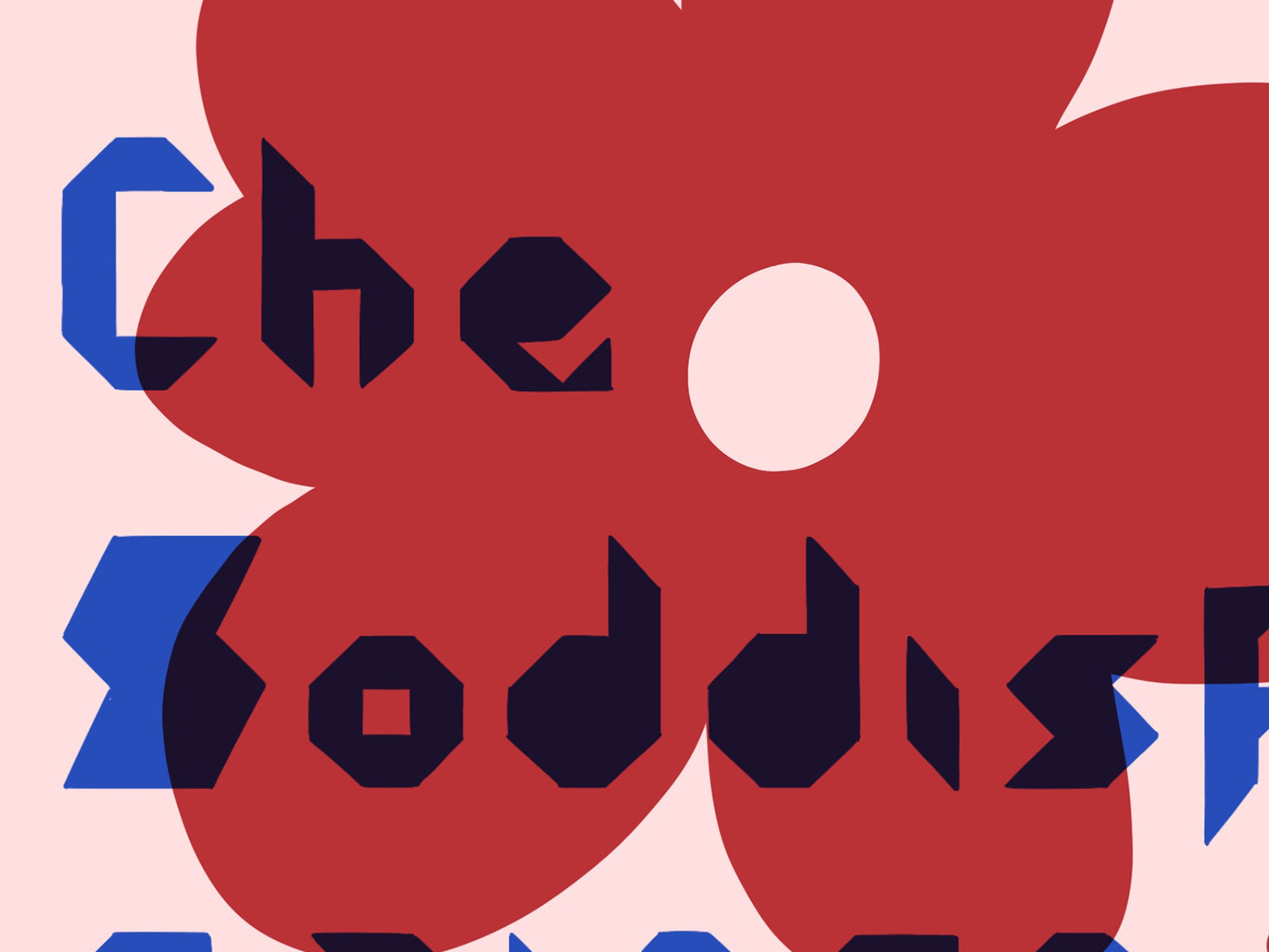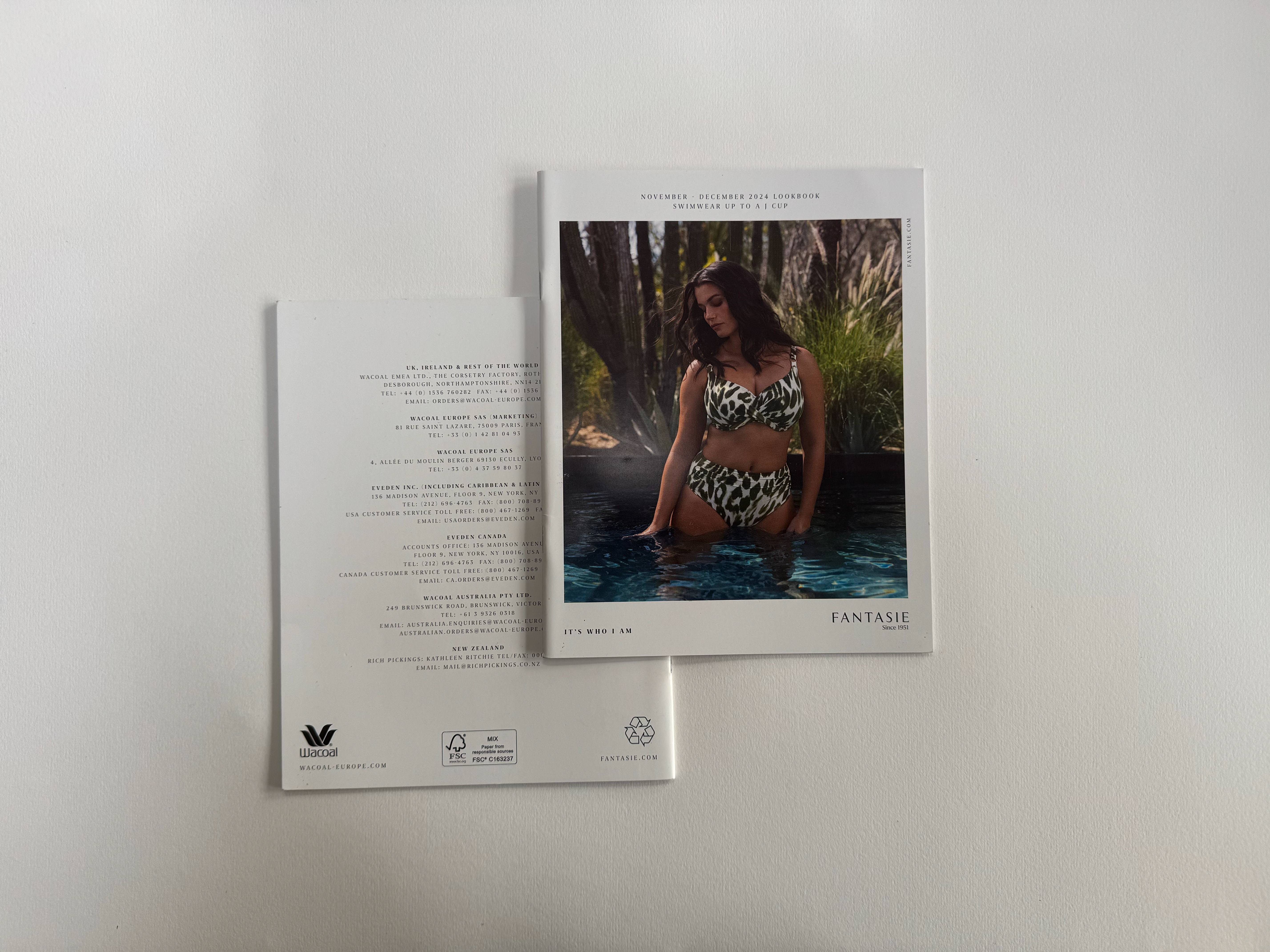Posters will be placed on both physical and digital touchpoints. The physical touch points will be in local towns/cities, and each poster will be placed in close proximity to the other to ensure the community is confronted with the issue, it cannot be avoided, and women’s experiences need to be brought to the front to create a wider understanding of exactly how abortion is healthcare.
Some posters highlight women’s individual experiences. They use handwritten typography with soft colours to both highlight the experiences of the women, but also to soften the message and make a difficult subject more digestible.
I also included designs that show and explain the impact that access to abortion has on the community. This would allow those who aren’t personally affected or know of someone affected to gain perspective and understanding too.
Some posters will be large scale, others smaller but they will all be placed in close proximity to one another to ensure people engage and are confronted by the issue. Each features a QR code that takes them directly to the website to share their own thoughts.
There are a mix of digital and print posters too, allowing for durability in the elements, but against anti-abortionists.
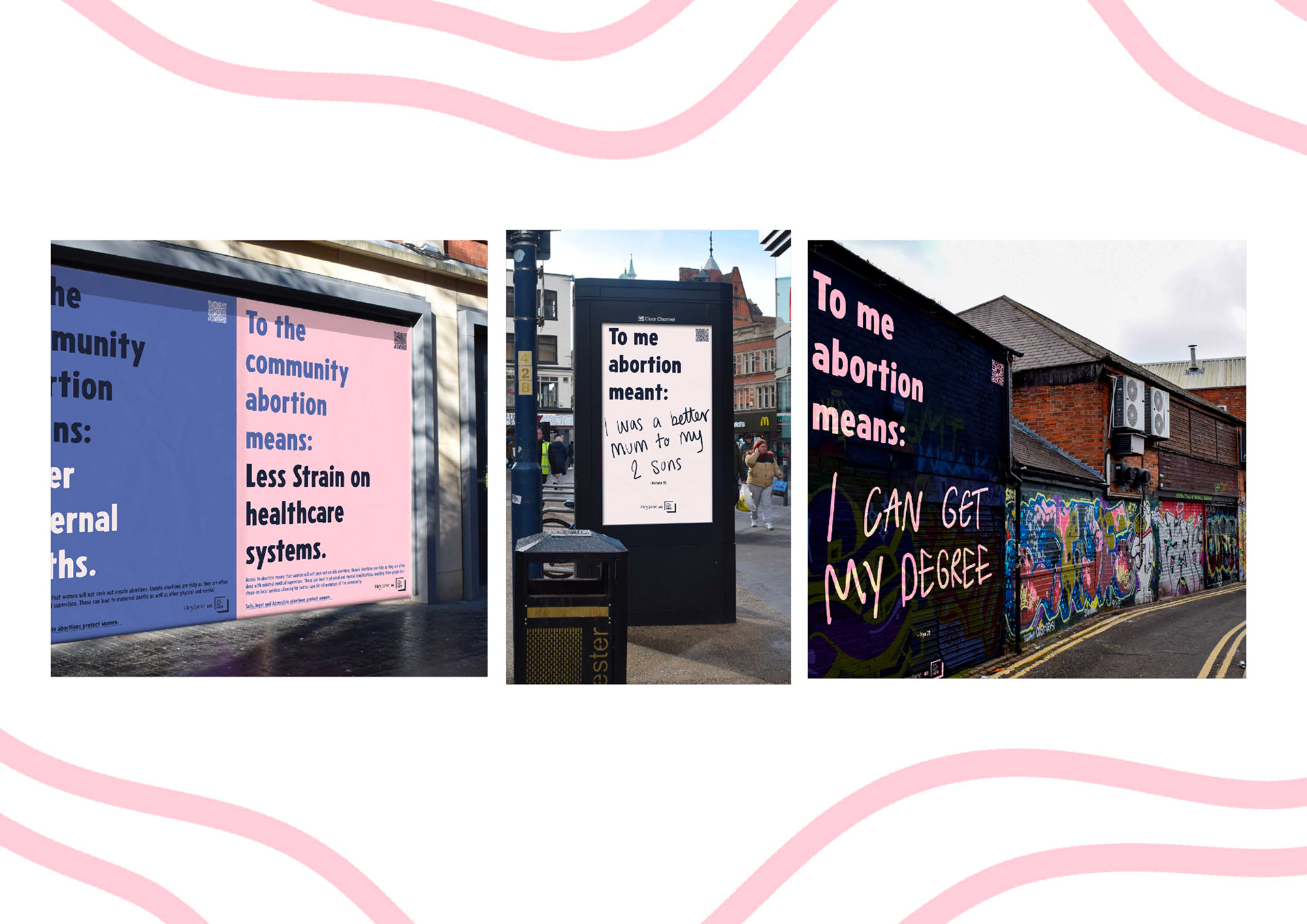
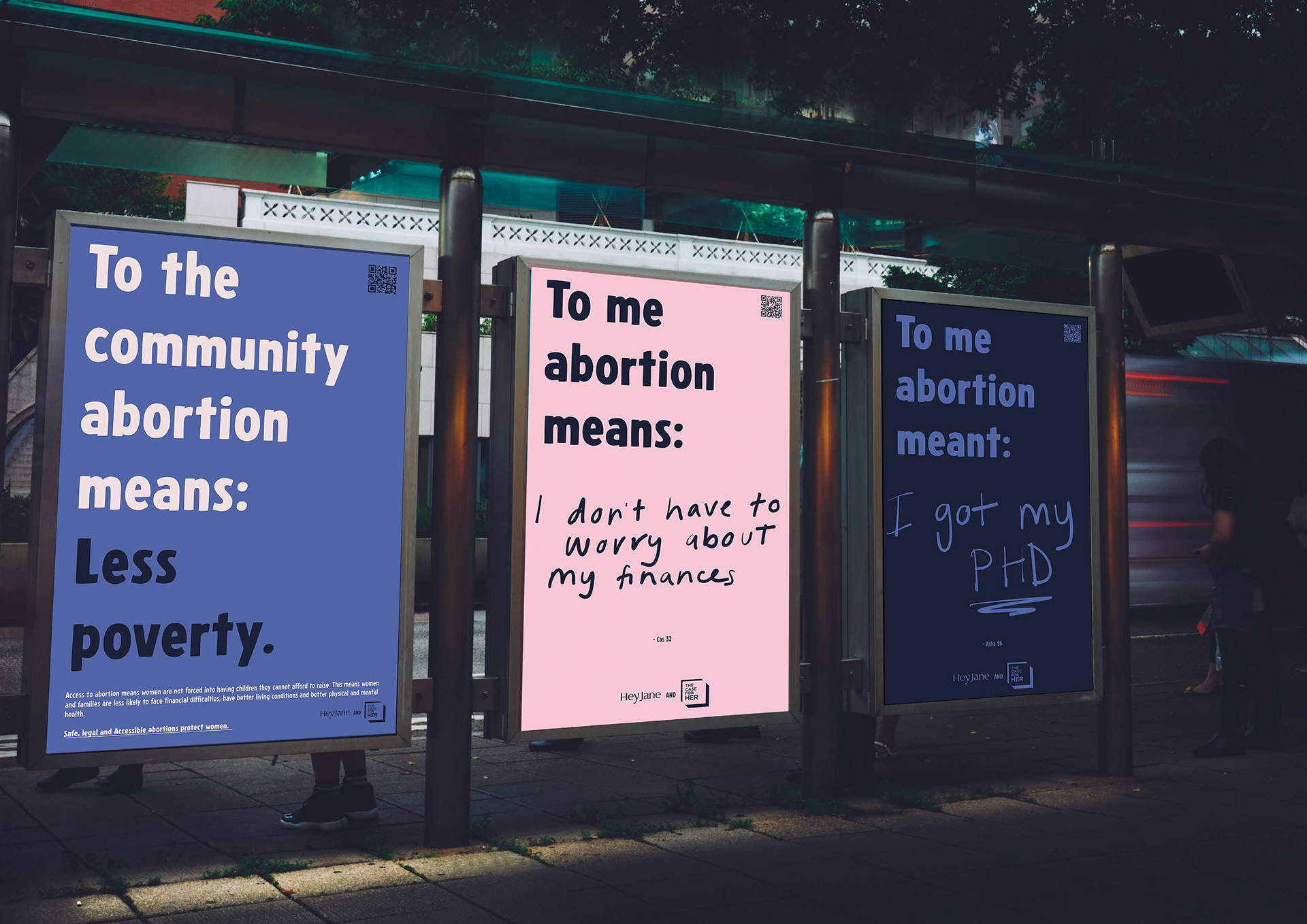
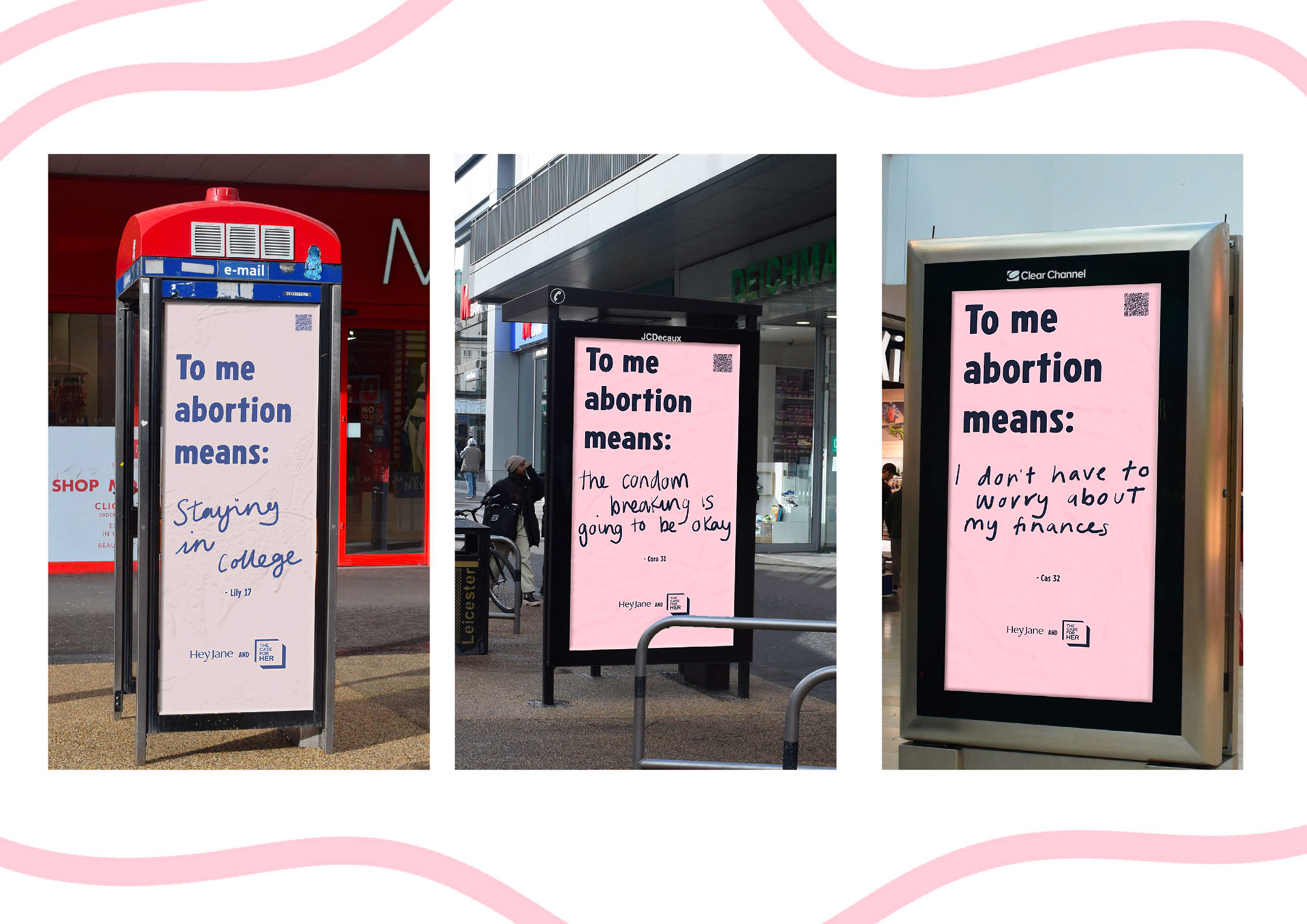
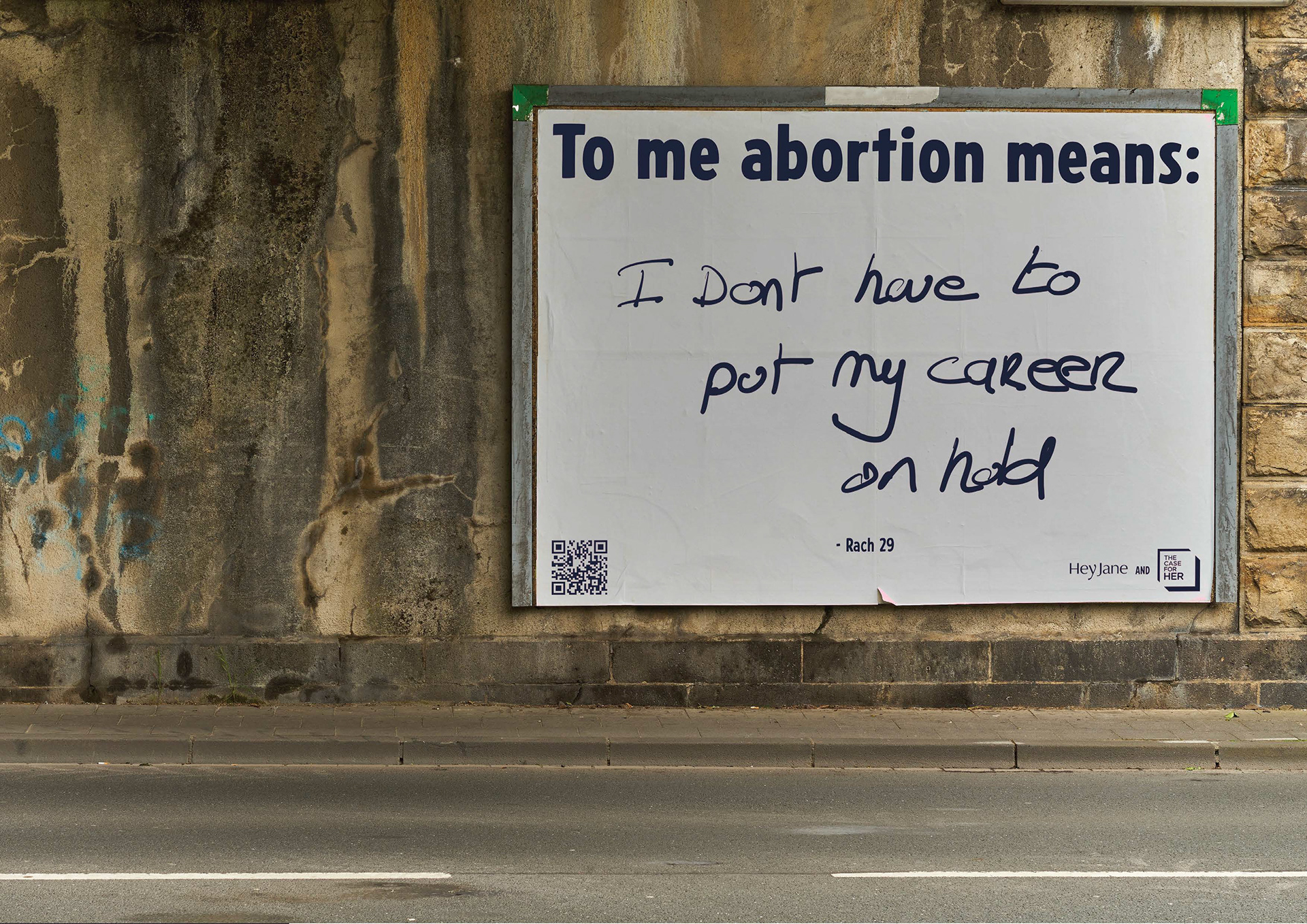
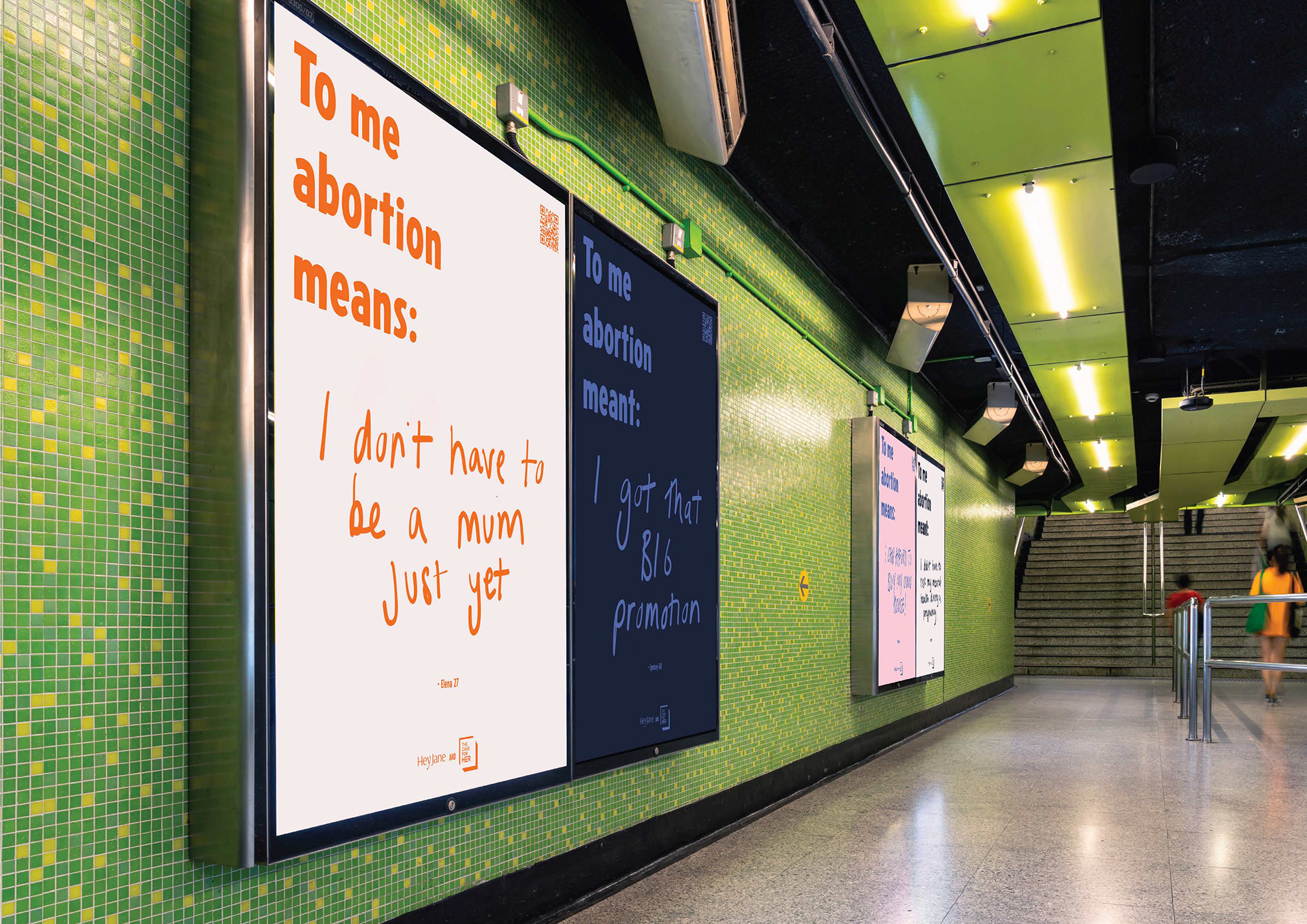
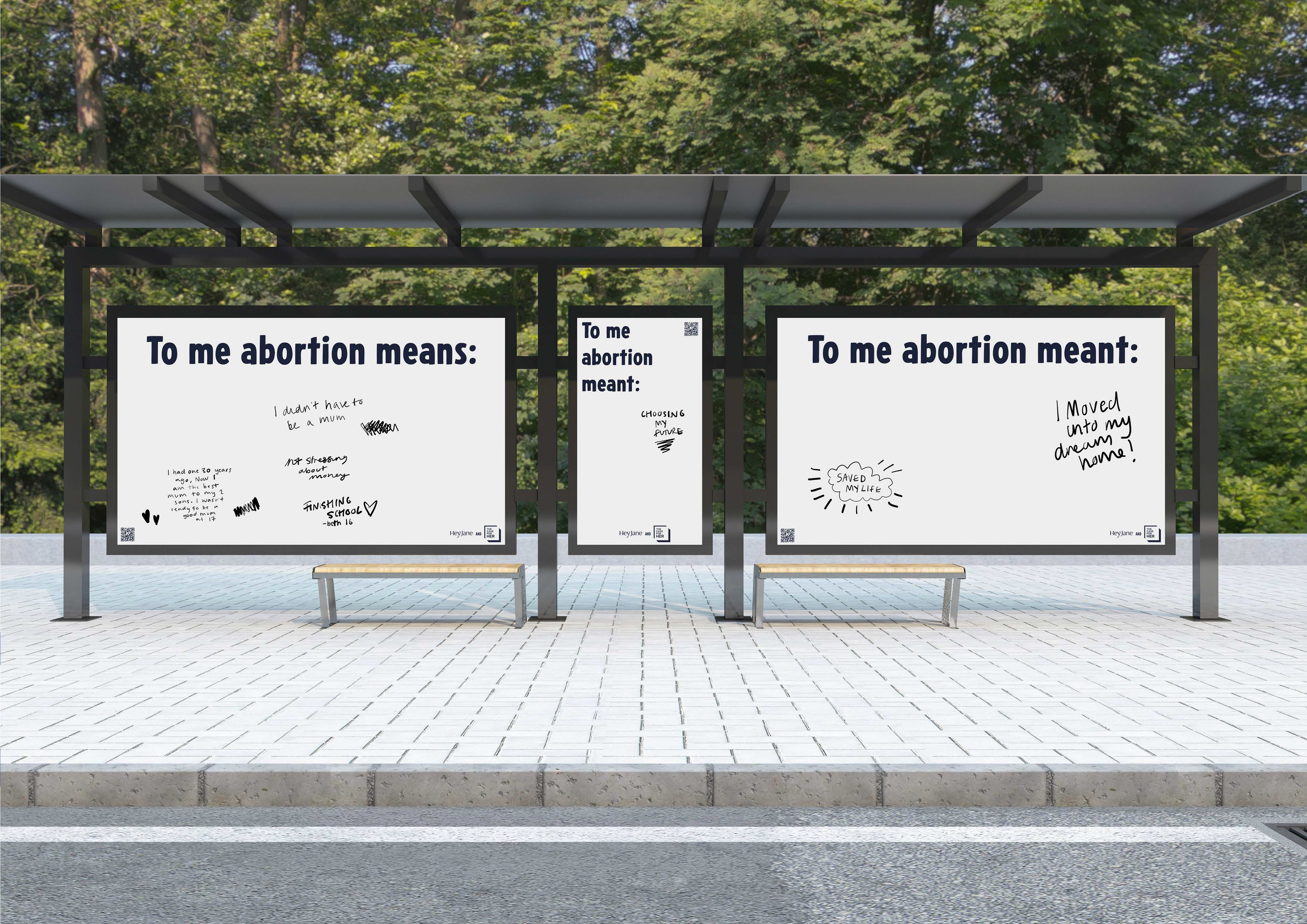
The social media account attached to the campaign would post women’s definitions of abortion (what having an abortion meant to them/provided them) every day. The accounts would come from the website - all real life examples. The accounts would come from women who have had abortions in the past, but also those who are considering having one.
Everything submitted on the website is anonymous, but the names and ages on the page will be based off of the real life accounts to show how abortions are relevant to everyone of all ages and backgrounds.
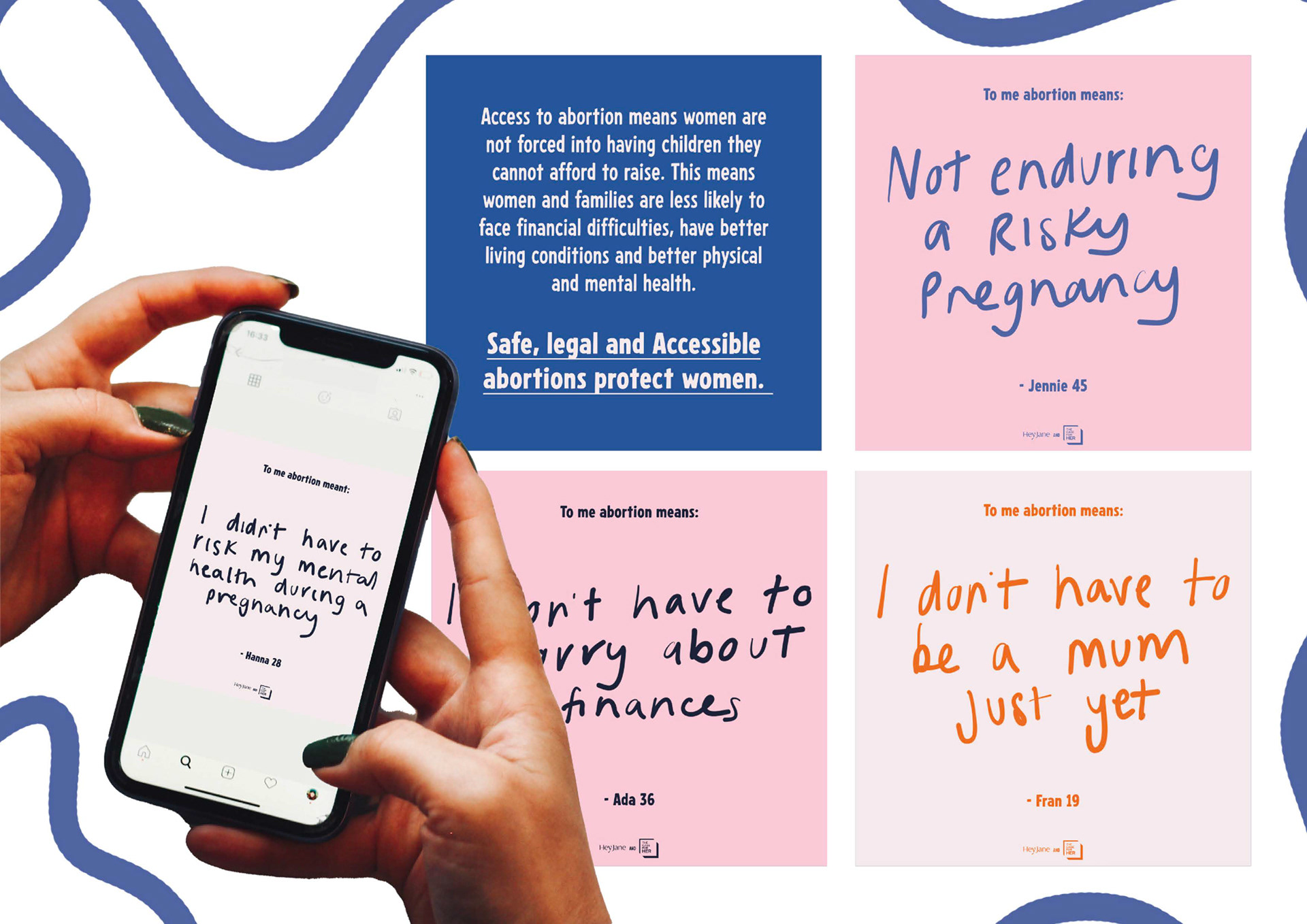
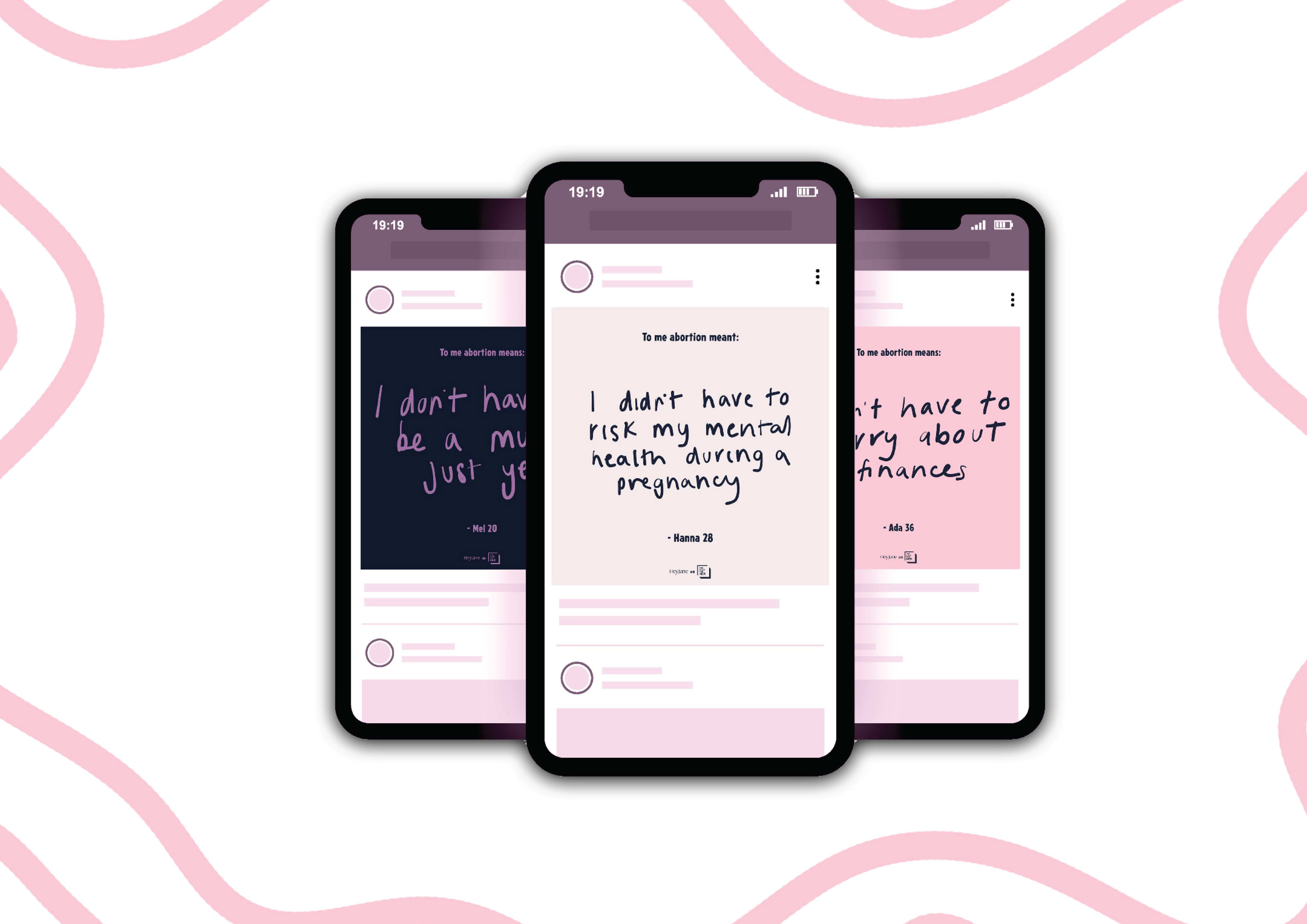
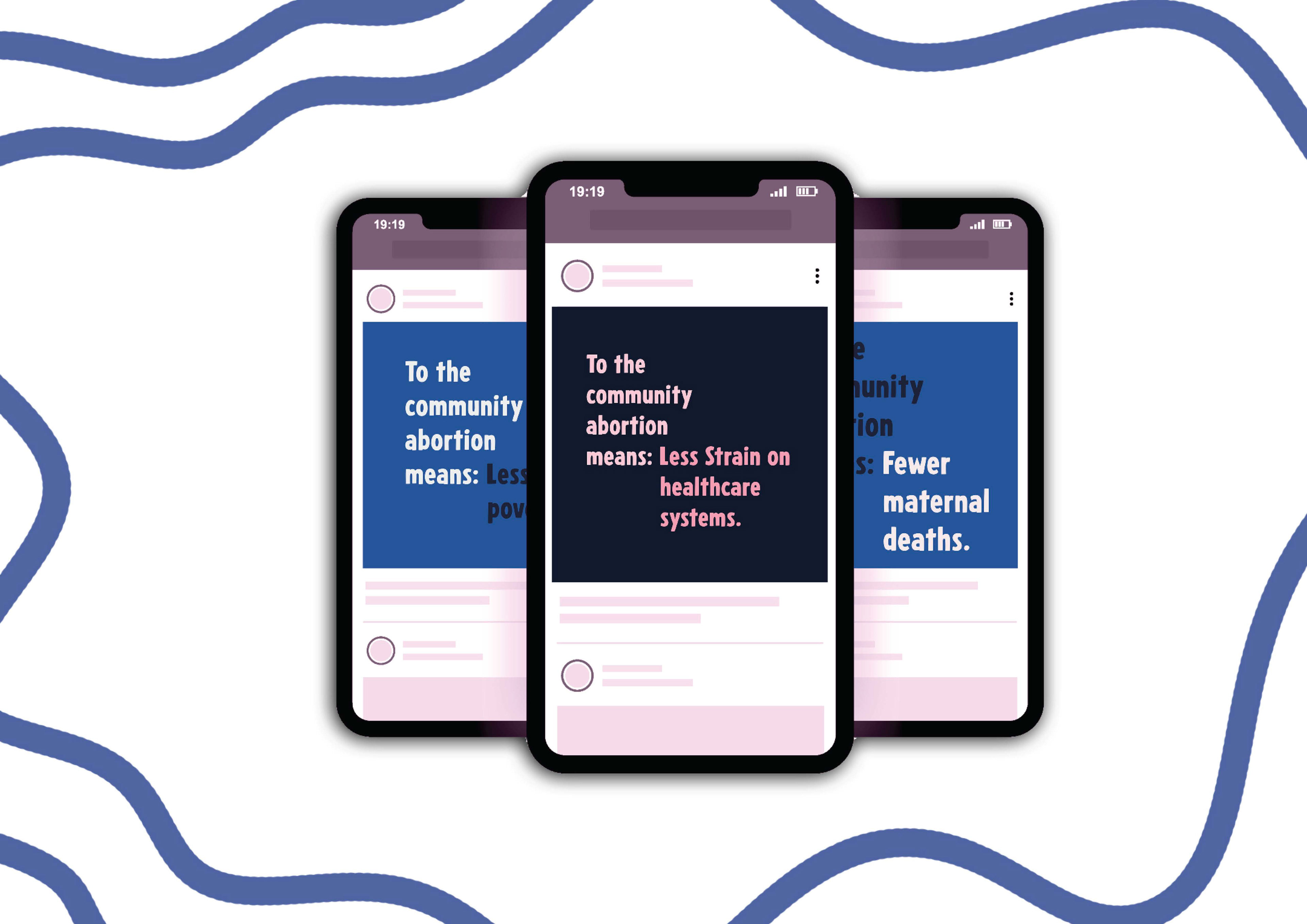

The website is accessed via the QR codes on the posters or via the link on the social media pages. The site asks you to define abortion twice, once before learning about it and once after. It forces people to confront the reality that abortion is crucial to women’s health, both physically and mentally.
The aim is to engage with various members of the community, not just my student target audience. People will encounter the campaign in various physical and digital touch points. It also creates an open and honest discussion that will highlight taboos and misconceptions. It also ensures longevity, people can always add to this and always learn from.
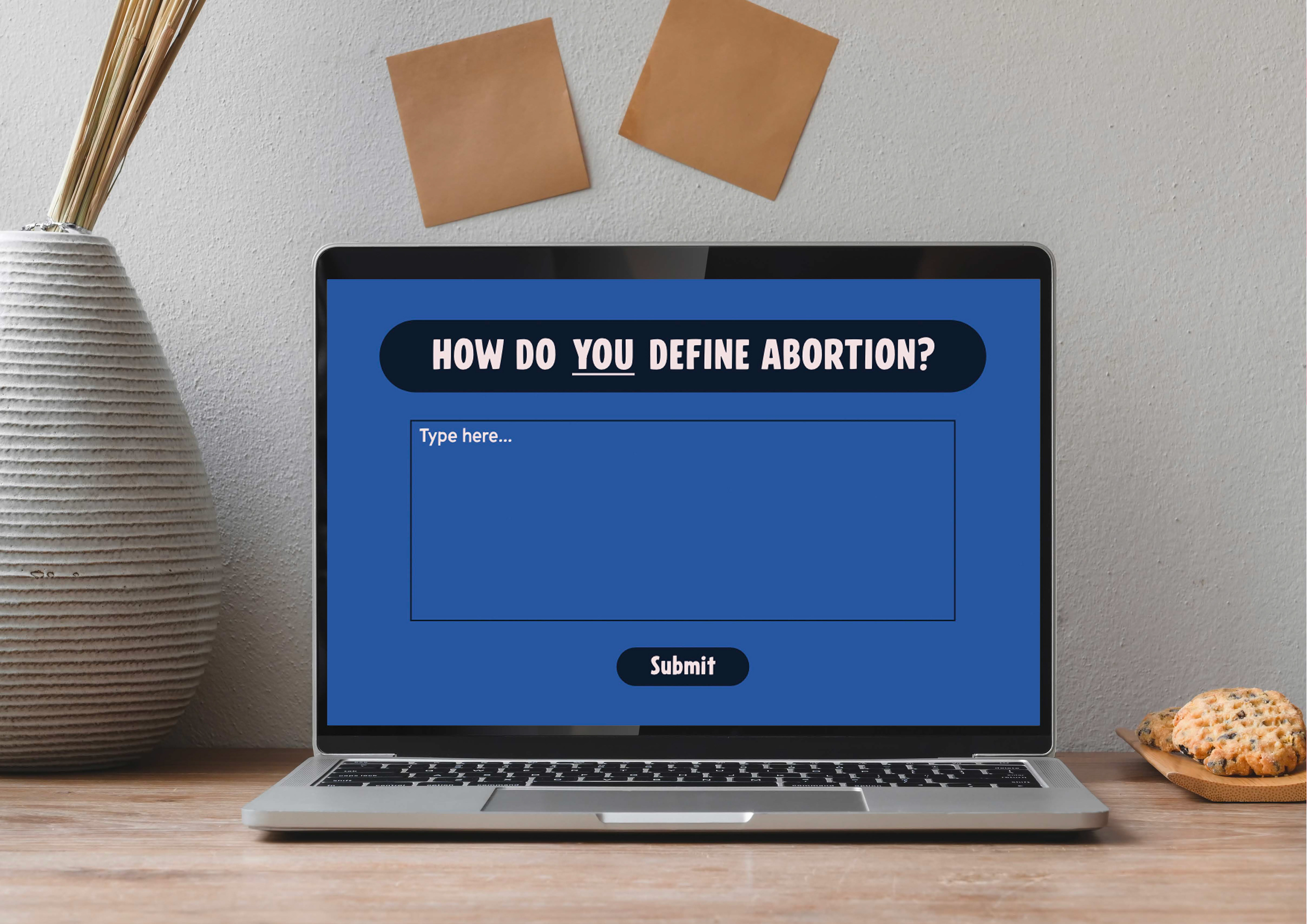
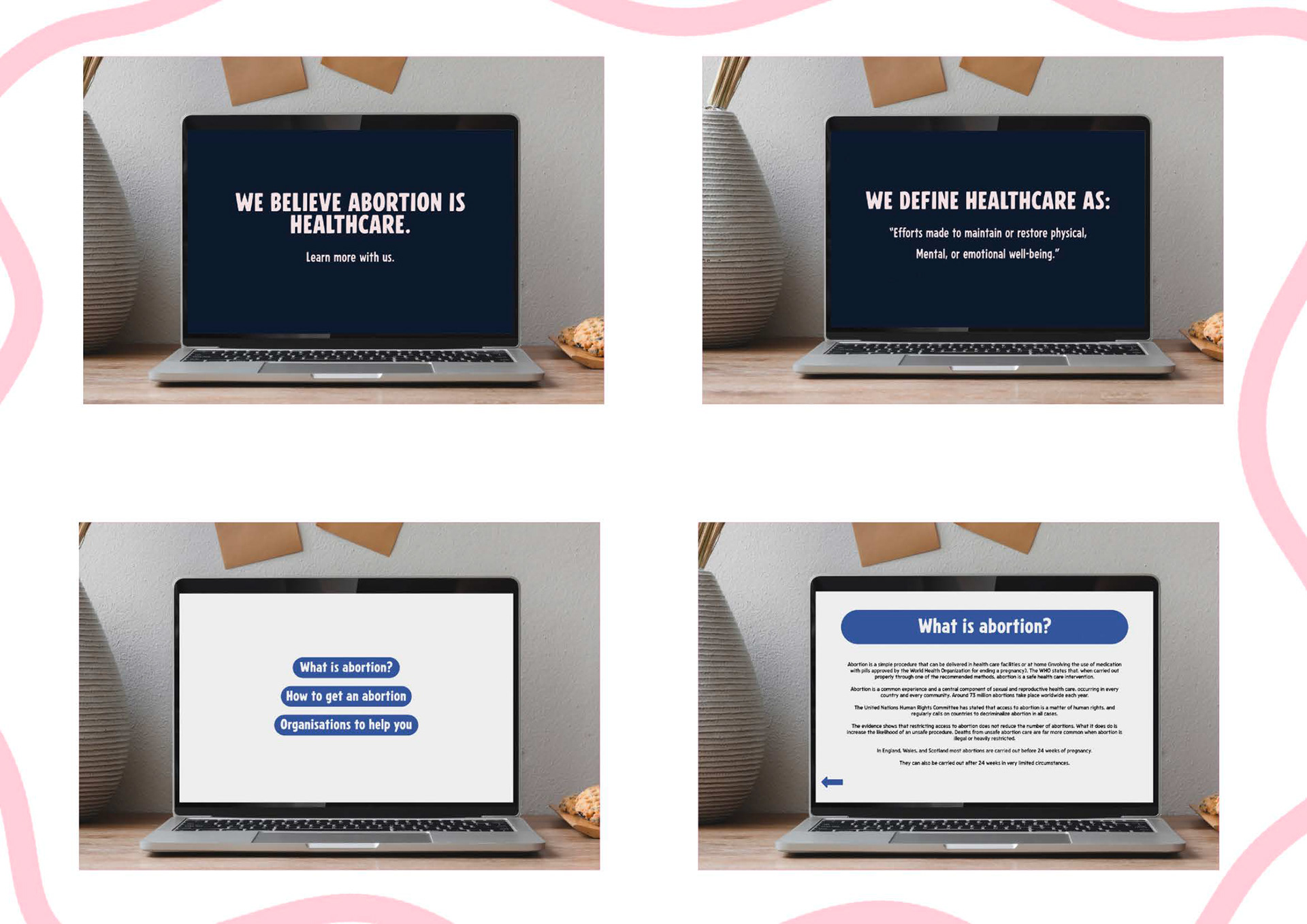
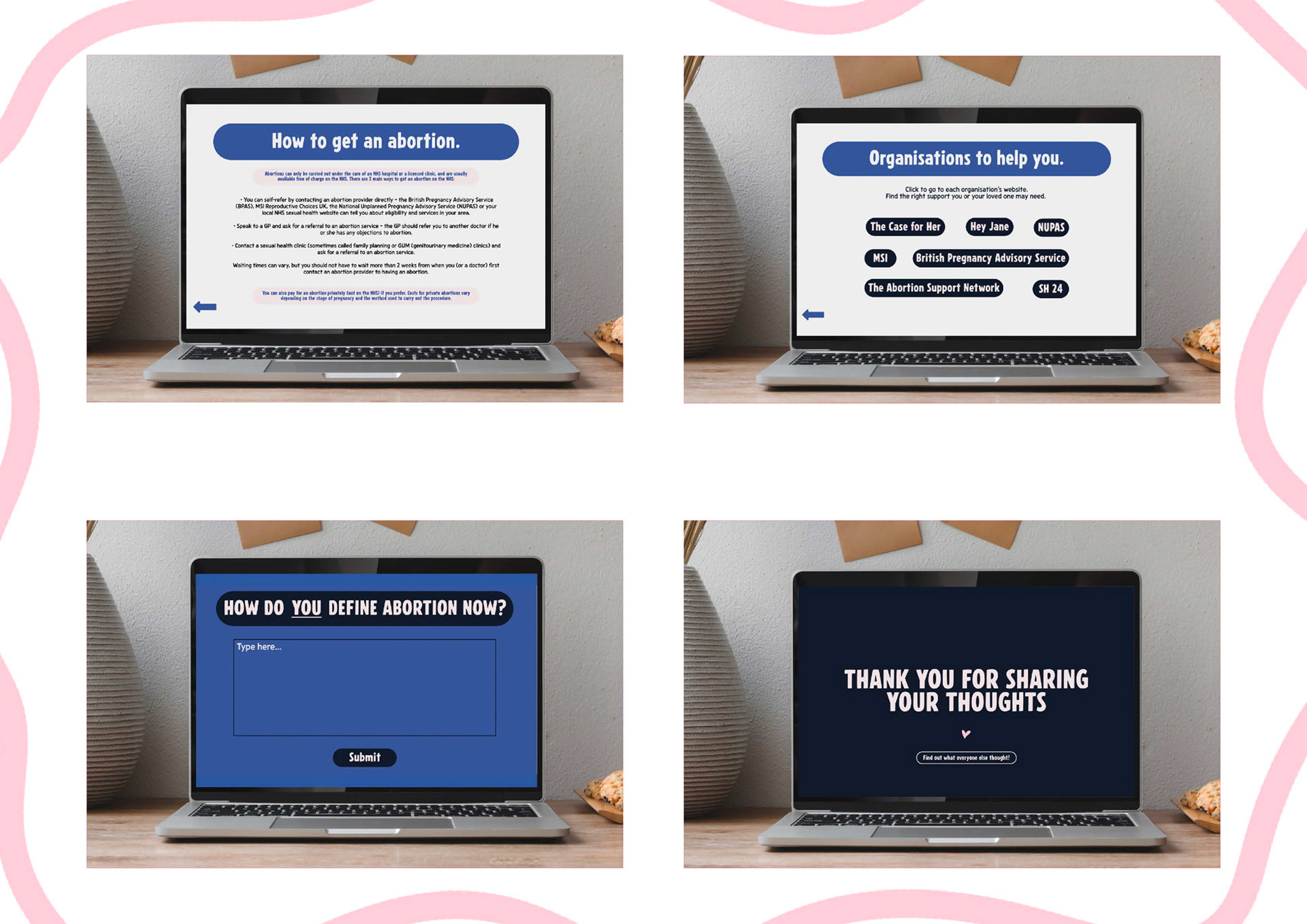
Vulnerability to anti-abortion protestors vandalising them. We cannot stop this, however, we can use instances of vandalism to broaden the discussion and reinforce our message.
Any work that has been vandalised in whichever way will be shared to show exactly why we need to talk about abortion and why the stigma needs to be removed.
We will be able to reinforce. Our message is that abortion is a key part of healthcare that is fundamental to the health and well-being of women, but also the other members of the community.
These will be primarily shared across social media platforms, but could possibly lend themselves to physical posters and billboards.
